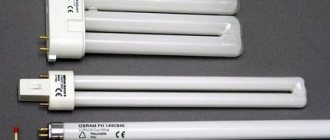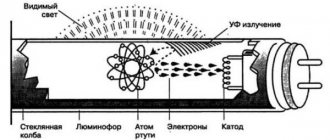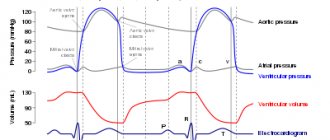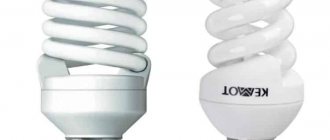The existence of modern civilization is impossible to imagine without electricity. It is used in all spheres of human activity. Of course, there were times when electricity had not yet been invented, but how limited were the capabilities of man of that era. Today, the cessation of energy supply, even for a minimal period of time, leads to complete paralysis of human life. What about remote regions where power lines have not yet reached? This justifies numerous and long-standing attempts by scientists to harness the sun's free energy to generate electricity. From the accidental discovery of the phenomenon of the photovoltaic effect by the French physicist A. Becquerel in 1839 and the invention of the first photovoltaic cell in 1873, to the start of commercial production of solar cells in the second half of the twentieth century, there were dozens of discoveries. But today, devices that convert sunlight into electricity are increasingly entering our everyday lives and serve as an excellent alternative to centralized energy supply.
There are entire cities that completely meet their electricity needs by converting solar energy. In Russia, solar-powered lighting devices are often used in country and private homes. This type of lamps is also used on highways, city streets and other places difficult to reach for electricity.
How does a solar lamp work?
The basis of the lamp, which ensures its functionality, is a solar battery. To date, this is its most expensive component. A solar panel is a collection of photovoltaic cells that, when exposed to sunlight, produce electrical current using the photovoltaic effect.
The design is made of two layers of silicon semiconductors with different conductivities. When the upper “solar” layer, which acts as a cathode, is heated by sunlight, electrons from the silicon atoms are “knocked out” by photons of light. After which they flow to the atoms of the lower plate, which serves as the anode. From the bottom plate, electrons move along connecting wires through the battery, charging it, and return to the top plate.
Depending on the structure of silicon crystals, there are three types of photocells for solar panels:
- polycrystalline;
- monocrystalline;
- amorphous.
The production of polycrystalline panels is the least expensive, but such solar cells have a low efficiency when converting light energy into electricity. Monocrystalline solar cells have a maximum efficiency of 25%. In this case, the silicon crystals have fewer edges, which allows electrons to travel at higher speeds. The cost of such batteries is correspondingly higher, but to generate the same amount of electricity, a smaller area of photocells is used than in the case of polycrystalline models. The production of amorphous panels requires several times less silicon than the production of crystalline analogues. At the same time, they are able to generate electricity in low light conditions, therefore they are considered more efficient in regions with a small number of sunny days.
The next important element in a solar battery is the battery. It is designed to store the energy that the panel produces. Typically, nickel-metal hydride or nickel-cadmium models are used, which can withstand a large number of charge-discharge cycles.
To avoid overcharging the battery, the lamp includes a charge controller. Depending on the charge level, it connects or disconnects the solar panel. The controller can perform the function of automatically turning on the lights at dusk. On some models this option is duplicated by a mechanical switch. More complex types of devices are capable of controlling the maximum power level.
The list of elements of a solar panel may include an inverter - a DC-AC converter. The stabilizer is designed to protect the system from possible voltage surges.
Light sources in solar-powered lamps are most often made using LEDs. They consume a small amount of energy, do not heat up and have a long warranty period.
All of these components are housed in a housing that is resistant to direct sunlight, precipitation and dust. Sometimes the solar battery is structurally located separately from the lamp itself.
Main Features of Garden Solar Lanterns
Solar lamps can be grouped into three groups according to the following characteristics:
- Features of design and construction. They in turn are divided into:
- bollards . They are made in the form of columns and are an effective element in garden design;
- built into steps ;
- used for illuminating ponds . Such lamps are immersed in water;
- used in the decorative design of flower beds and flower beds. During the day, the lamps merge with the plants, and at nightfall they focus attention on the floral arrangements;
- used to illuminate isolated trees . A tree trunk, engulfed in the twilight by a directed beam of light, will look very impressive and unusual.
- Qualitative characteristics. The photocell used in solar lamps is made of silicon, or rather from its modifications. Traditionally, polycrystalline silicon is used. Its quality is significantly inferior to monocrystalline silicon, since this modification of the chemical element is covered with an oxide film upon first contact with the air. It protects the photocell from environmental influences.
- Glass surface:
- smooth glass reflects most of the direct light and about half of the diffuse rays;
- structured glass collects diffusely scattered radiation ;
- Tempered glass has the best qualities .
Advantages and disadvantages of solar-powered lamps
In order to know how to choose the right solar-powered lamp, you need to correctly evaluate their advantages and disadvantages.
This equipment has the following advantages over conventional lamps.
- Autonomy. There is no need to lay wires from the central power supply to the lamp. Solar-powered lamps do not require regular battery replacement.
- Compactness. Household models of such lighting devices are lightweight, small in size and have universal fastening, which allows them to be moved without special equipment.
- Economical. There is no need to pay for electricity. LED lamps used in modern lamps have a very long service life.
- Simplicity and ease of installation. When installing lamps, no special professional skills or special tools are required.
- Electrical and fire safety. The equipment is not connected to the mains. During operation, the possibility of contact with the electrical filling of the device is eliminated, and the lamps do not heat up.
It is important to consider not only the pros, but also the disadvantages of this type of lighting elements.
- Dependence of functioning on climatic factors. The greater the latitude, the shorter the daylight hours. The number of sunny days in most regions of our country is also small. Solar panels may not provide enough energy to fully charge the battery and operate the lights effectively at night. It is advisable to use such lamps in central Russia only in the summer.
- Unstable lighting level. During operation, the brightness of the lamps gradually decreases as the battery discharges. This is especially noticeable during long nights.
- The likelihood of failure of the lamp in extreme weather conditions. In extreme cold, problems may arise with the functioning of batteries, and in extreme heat, overheating and failure of semiconductors cannot be ruled out.
- Increased maintenance requirements. Solar panels can become clogged during operation, which will lead to a decrease in the performance of the lamps. If the battery or LED lamp fails, repair is not advisable. The product will have to be disposed of and replaced.
Do it yourself: how to assemble a lamp yourself?
The catalogs of specialized stores offer a huge selection of lamps. The price of battery-powered equipment is an order of magnitude higher than its analogues, so we suggest assembling the structure on your own. To mount a handmade piece you will need:
- Batteries with a capacity of 1500 mAh. We recommend buying Ni-MH AA batteries, because high-capacity batteries will not have time to fully charge in a day. Another requirement for the battery is that the output voltage must be 3.7 V.
- Solar panel modification 5.5 V/200 mA.
- Resistor with an indicator of 47-56 Ohms.
- Diode marked KD243A (KD521).
- Transistor type KT361G (KT315).
- Board for assembling the circuit.
- LEDs (1 pc. 3 W or 2 pcs. 1.-1.5 W each).
- Reflector. As an alternative, we suggest using a CD.
How to choose the right solar lamp
When installing lighting, first of all, you need to analyze the technical characteristics of the model you like in order to understand what area and how brightly the device can illuminate. This directly affects the required number of lamps and the distance between them. Not everyone can immediately understand the rated power of LED lamps, which is why the lamp data sheet usually indicates the corresponding number for a similar incandescent lamp.
Buyers who have studied physics well at school can try using reference books to convert power watts into lux, lumens per meter or phot. To mark paths or garden objects, as well as for decoration, low-power devices are used, providing illumination of up to 100 lm. To fully illuminate an area of the territory, luminaires with more powerful lamps are selected, guaranteeing a value of 700 Lm and higher.
For long-term and reliable operation, solar-powered lamps must have a housing and shade protected from dust and moisture. The degree of protection from the influence of external factors is indicated by the IP index indicated in the device passport. For street lamps, the index value must be at least IP44.
You should also pay attention to the material from which the device is made. Most often it is impact-resistant plastic, aluminum, bronze or stainless steel. Such lamps do not become rusty and retain their appearance for a long time. When choosing a device based on the body material, it is customary to focus on the concept of landscape design and the operating conditions of the lamp. The lamp may also have a wooden body, but then it will have to be periodically treated with protective agents.
When purchasing a solar-powered lamp, you need to pay attention to the parameters of the battery that comes with the device. The larger the capacity, the longer the lamp will work at night and the longer it will take to charge during daylight hours.
As additional options, luminaires can include sensors that monitor the level of illumination and volume sensors that respond to movement. These elements ensure rational consumption of battery power, automatically turning on the lighting when it gets dark and turning it off in the morning. The device will also turn on in response to the approach of a moving object and turn off after a while.
Taking into account the different installation principles, lamps can be classified into the following groups.
- Ground. Such lamps have a small height and are mounted on a stand with a pointed end, which is simply stuck into the ground. They are ideal for marking paths or highlighting flower beds and can be moved to another location without much effort.
- Pole lamps. Models with a stand height above 1.5 meters. Due to their massiveness, they require some excavation work during installation. There are lamps for installation on paving slabs, asphalt or other hard surfaces. The stand in this case has a flange at the lower end.
- Lamps for vertical surfaces. Mounted on a wall or fence. The range of models is striking in their variety of styles - from the classic gas city lantern to high-tech models.
- Pendant lamps. This includes models that mount to ceilings, beams, and even trees. Used as decorative lighting for recreation areas and gazebos.
- Recessed lamps. Mounted inside vertical or horizontal surfaces. Ideal for illuminating stairs at tread level.
- Decorative lamps. They look like fairy-tale figurines for landscape decoration.
Installation Rules
A competent choice of installation location for a solar-powered lamp is the key to its long-term operation with the parameters declared by the manufacturer.
The main task is to ensure maximum illumination during daylight hours. Even a slight shadow falling on the surface of the semiconductor panel does not allow the battery to be fully charged and ultimately affects the performance of the battery. Choose an area that is as open as possible without tall trees, bushes, or buildings that cast shadows. In this case, you will be able to fully appreciate the beauty of the lamp.
Peak load and average daily energy consumption
The pleasure of having your own solar station is still worth a lot. The first step on the path to harnessing the power of solar energy is to determine the optimal peak load in kilowatts and the rational average daily energy consumption in kilowatt-hours for a household or country house.
The peak load is created by the need to turn on several electrical appliances at once and is determined by their maximum total power, taking into account the overestimated starting characteristics of some of them.
Calculating the maximum power consumption allows you to identify which electrical appliances need simultaneous operation and which ones are not so vital. The power characteristics of the power plant components, that is, the total cost of the device, are subject to this indicator.
The daily energy consumption of an electrical appliance is measured by the product of its individual power and the time that it worked from the network (consumed electricity) during the day. The total average daily energy consumption is calculated as the sum of electricity consumed by each consumer over a daily period.
Subsequent analysis and optimization of the obtained data on loads and energy consumption will ensure the necessary configuration and subsequent operation of the solar energy system at minimal cost
The result of energy consumption helps to rationally approach the consumption of solar electricity. The result of the calculations is important for further calculation of battery capacity. The price of the battery pack, a significant component of the system, depends even more on this parameter.
How to turn on a solar lamp
In retail stores, luminaires must be sold with a fully charged battery. During long-term storage, even if the device was not turned on for a short time and was not placed on a display shelf, the battery will still lose some of its charge. To extend its service life and maintain its capacity parameters, it is advisable to first perform a discharge cycle and then charge it to the maximum value.
Solar energy is the energy of the future. By choosing lighting with photo panels, you choose independence and environmental friendliness. Install light in your dacha or cottage yard and evaluate the capabilities of such lamps.











